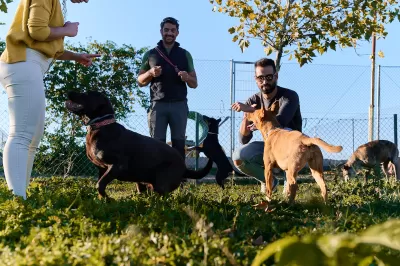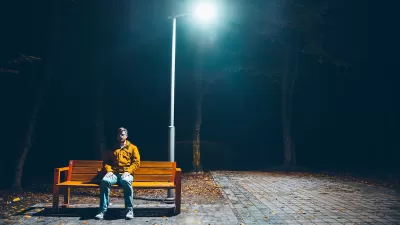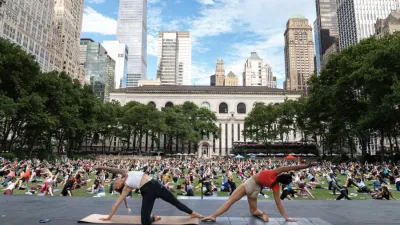While urban design alone can’t mend the tears in our social fabric, planning decisions and thoughtful, inclusive design can offer or hinder opportunities for interaction.

Writing in Bloomberg CityLab, Linda Poon describes a new book by Andy Field titled Encounterism: The Neglected Joys of Being In Person that highlights the importance of interactions with strangers. “The mental health benefits of even the briefest of conversations can add up, according to Field.”
According to surveys, the “loneliness epidemic” is affecting groups differently: younger people and those over the age of 50 are most likely to report feeling lonely and not interacting with many people outside their home, while “People with lower incomes and members of underrepresented racial and ethnic groups are more likely to be lonely.”
Field attributes the rise in loneliness to “a constellation of design decisions that ignore the value of social connections” in favor of convenience—and, during the pandemic, public health—such as self-checkout lanes, mobile ordering, and delivery services, as well as urban patterns that promote car-centric lifestyles and limit access to public space and community life.
The article includes several examples of cities that made concerted efforts to create opportunities for social interaction and build pleasant, safe, accessible public spaces. Poon notes that “Opportunities for psychologically restorative face-to-face interactions aren’t limited to parks and other public spaces. They occur aboard trains and buses during commuting, in supermarket lines and apartment building mailrooms, and other sites of workday congregation.”
Multifamily housing can also offer spaces for residents to mingle—if designed effectively. This is where zoning comes in: eliminating parking requirements, for example, can free up valuable real estate that could be used for common spaces.
Field admits that building community is about more than just “carefully arranged furniture.” Setha Low, author of Why Public Space Matters, says we “need to think more intentionally about creating a “public culture” within these spaces that is welcoming of people of different backgrounds and interests, and that invite both discussion and dissent.”
FULL STORY: City Life Is Too Lonely. Urban Planning Can Help.

Maui's Vacation Rental Debate Turns Ugly
Verbal attacks, misinformation campaigns and fistfights plague a high-stakes debate to convert thousands of vacation rentals into long-term housing.

Planetizen Federal Action Tracker
A weekly monitor of how Trump’s orders and actions are impacting planners and planning in America.

In Urban Planning, AI Prompting Could be the New Design Thinking
Creativity has long been key to great urban design. What if we see AI as our new creative partner?

King County Supportive Housing Program Offers Hope for Unhoused Residents
The county is taking a ‘Housing First’ approach that prioritizes getting people into housing, then offering wraparound supportive services.

Researchers Use AI to Get Clearer Picture of US Housing
Analysts are using artificial intelligence to supercharge their research by allowing them to comb through data faster. Though these AI tools can be error prone, they save time and housing researchers are optimistic about the future.

Making Shared Micromobility More Inclusive
Cities and shared mobility system operators can do more to include people with disabilities in planning and operations, per a new report.
Urban Design for Planners 1: Software Tools
This six-course series explores essential urban design concepts using open source software and equips planners with the tools they need to participate fully in the urban design process.
Planning for Universal Design
Learn the tools for implementing Universal Design in planning regulations.
planning NEXT
Appalachian Highlands Housing Partners
Mpact (founded as Rail~Volution)
City of Camden Redevelopment Agency
City of Astoria
City of Portland
City of Laramie





























